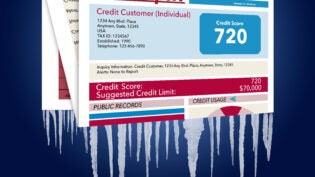
No matter how small or big a business is, there is always that confidential information that all companies want to secure. It could be financial records, internal documents, or any other documents with sensitive data. Laws regarding document security can differ across industries. Here are a few ways to secure confidential data.
1. Internal Policies
The first step to securing your business information is implementing the best policies for your business. However, those policies may need to be shared with workers so that everyone knows what is expected of them. Sensitive data should never be left on the printer for anyone to access it. It is best practice to retrieve documents printed to a shared printer immediately so that unauthorized persons can’t see them.
Ask your IT expert to encrypt all sensitive data before it can be scanned and sent via email. Know what documents are worth retaining and create policies for how long a file can be kept. Consider shredding any unnecessary documents that may contain confidential information such as workers’ names and social security numbers. You can save a copy of any document you need to retain in a password protected file so that unauthorized persons can’t access it.
2. Use a Smartphone
Using a smartphone to take photos of any of your purchases can be an eco-friendly way to get rid of paper receipts. Online storage solutions have made purchases and expenses tracking easier than ever. You can now get your receipt emailed to your account once you shop online.
3. Use eSignature
With eSignatures, businesses can have their documents signed without scanning, printing, or emailing them to a client. There are instances when you may need to get a signature from a client who is far away from you. Businesses no longer have to scan, print, and email a document to a client so that it can be signed. While this practice allows critical data to be sent via email, which is reliable and secure, it is not always reliable in the digital era. Instead, electronic signatures have changed everything. Businesses can now have their confidential documents signed digitally.
4. Password Protection
It amazes to see how many small enterprises store their data on unsecured laptops. Keeping data in an unsecured hard drive could mean exposing sensitive information if the laptop gets stolen, lost, or hacked. However, a good password and firewall are an extra security layer for protecting sensitive data from potential theft or lose.
Password protection features in Excel and Microsoft Word can help restrict unauthorized access to confidential documents. Businesses can use a password in Adobe Acrobat to prevent their files from being copied, edited, printed, or opened by unauthorized persons. Protecting PDF files with passwords before sending out contracts has even become an acceptable business practice.
5. Make Digital Copies
A lockable filing cabinet alone may not be enough to protect confidential documents. Hard copies or paper documents are easier to access, but backing them up is essential. All you need is a scanner for scanning confidential documents to digital files. However, it is crucial to safeguard all sensitive documents in cloud-based storage once you scan them.
Cloud-based storage offers a myriad of solutions where businesses can save their data on remote servers that can be accessed over the internet. With cloud-based storage, companies don’t have to worry about losing their data in case of a break-in, fire, or hard drive crash. Most cloud-based storage solutions allow businesses to track who is accessing their data and how it is being shared.
Whether you’re a budding entrepreneur or an established businessperson, understanding how to protect confidential data is crucial. That can help your business secure more funds, attract more investors, grow, and ensure its longevity. Every company has different ways to protect its data depending on its nature and resources at its disposal. Password protection features, eSignatures, making digital copies, and the use of smartphones are a few sure ways that can ensure the security and confidentiality of your intellectual property.
2870 Views












